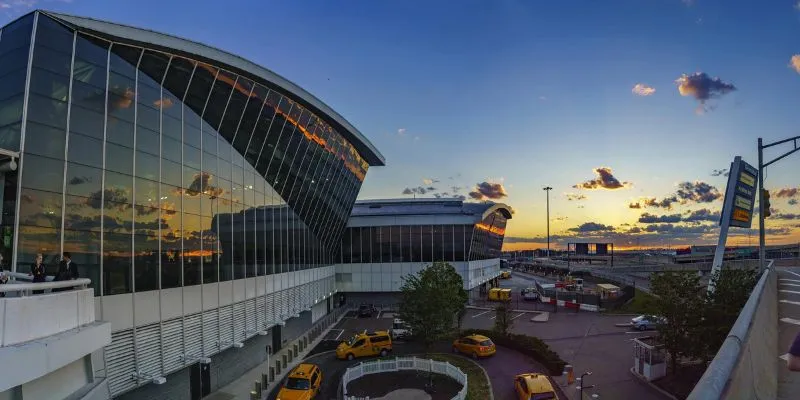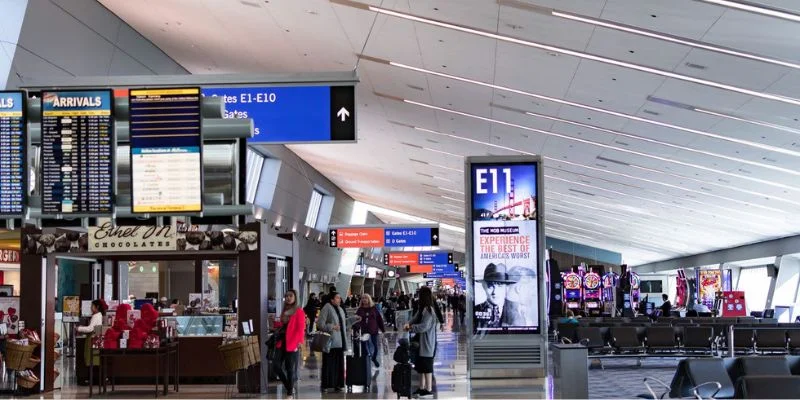The Dragon and The Elephant: China Vs India (Part 2)
Why China Surpassed India in Technology and Industrial Output.
Catching up with China is a formidable challenge that requires unwavering political will, broad societal consensus, and consistent execution of well-thought-out strategies over many years. While the path is arduous, a focused and determined India can significantly accelerate its journey towards becoming a global leader in technology, science, and industry.
For India to bridge the gap with China in technology, science, and industrial output, a multifaceted and sustained national effort is required. This involves strategic interventions across research and development, manufacturing, human capital, infrastructure, and governance. Here’s a deeper insight into what India needs to do:
1. Turbocharge Research & Development (R&D) and Foster a Robust Innovation Ecosystem:
Dramatically Increase R&D Investment: India's current R&D spending (around 0.7% of GDP) pales in comparison to China's (over 2.5%). A national mission to elevate this to at least 2-3% of GDP within the next decade is crucial. This requires increased public funding and significant incentives for private sector R&D.
Strengthen Industry-Academia Collaboration: Create seamless pathways for joint research projects, knowledge transfer, and commercialization of academic innovations. Establish dedicated innovation hubs, research parks, and technology incubators with active industry participation.
Revamp the Patent Regime: Streamline the patent filing and grant process to make it faster, more efficient, and aligned with global best practices. Strengthen intellectual property rights (IPR) protection to encourage innovation.
Promote Mission-Oriented Research: Identify and fund national missions in critical and emerging areas like artificial intelligence (AI), quantum computing, advanced materials, green hydrogen, and biotechnology, similar to China’s strategic focus areas.
Attract and Retain Top Talent: Implement policies to attract global scientific talent (including Indian diaspora) and create conducive environments to retain and nurture domestic researchers.
2. Transform into a Global Manufacturing Powerhouse:
Enhance Manufacturing Competitiveness:-
Scale and Efficiency: Encourage the creation of large-scale manufacturing units capable of competing globally on cost and quality.
Supply Chain Resilience: Develop robust domestic supply chains for critical components and raw materials to reduce import dependency, learning from China’s integrated approach.
Technology Adoption: Promote the adoption of Industry 4.0 technologies (AI, IoT, robotics, automation) in manufacturing processes.
Strategic Industrial Policy:-
Targeted Support: Continue and refine Production Linked Incentive (PLI) schemes for strategic sectors, ensuring clear goals and accountability.
Ease of Doing Business: Persistently work on simplifying regulations, reducing bureaucratic hurdles, and ensuring policy stability at both central and state levels. This includes faster approvals, easier land acquisition, and streamlined labor laws.
Focus on High-Value Manufacturing: Shift focus from low-value assembly to high-value-added manufacturing, including design, engineering, and R&D-intensive production.
3. Revolutionize Education and Skill Development:-
Overhaul Technical and Vocational Education:
Modernize Curricula: Align engineering, polytechnic, and vocational training curricula with current and future industry demands, emphasizing practical skills, problem-solving, and emerging technologies.
Mass Skilling and Upskilling: Launch large-scale initiatives to skill, reskill, and upskill the workforce for advanced manufacturing, digital technologies, and R&D roles.
Strengthen Apprenticeships: Expand and strengthen apprenticeship programs with active industry involvement.
Improve Quality of Higher Education:
Invest in STEM Excellence: Significantly increase investment in science, technology, engineering, and mathematics (STEM) education at all levels.
Faculty Development: Implement rigorous training and development programs for faculty in higher education and technical institutions.
Attract Foreign Universities and Foster Competition: Encourage top global universities to set up campuses in India to enhance quality and provide global exposure, as envisioned in the National Education Policy (NEP) 2020.
4. Build World-Class, Future-Ready Infrastructure:
Logistics and Connectivity: Continue the aggressive push for modernizing and expanding infrastructure, including highways (Bharatmala), railways (Dedicated Freight Corridors), ports (Sagarmala), and airports. Focus on multi-modal connectivity and reducing logistics costs and turnaround times, which are critical for manufacturing competitiveness.
Reliable Power Supply: Ensure uninterrupted, high-quality power at competitive rates for industries.
Digital Infrastructure: Strengthen and expand high-speed internet connectivity and data centers to support a digitally-driven economy and advanced technological applications.
Industrial Parks and Clusters: Develop well-equipped industrial parks and sector-specific clusters with plug-and-play infrastructure to attract investment.
5. Ensure Agile and Enabling Governance:
Bureaucratic and Regulatory Reforms:
Speed and Transparency: Implement deep administrative reforms to make bureaucracy more agile, responsive, and transparent. Reduce red tape through single-window clearance systems and extensive use of technology.
Policy Stability and Predictability: Ensure long-term policy stability and predictability to build investor confidence.
Effective Centre-State Coordination: Foster greater synergy between central and state governments in policy formulation and implementation related to industrial development, infrastructure, and skill development.
Strengthen Legal and Judicial Processes: Ensure faster contract enforcement and dispute resolution mechanisms.
6. Strategically Attract and Nurture Investment:
Targeted FDI in High-Tech Areas: Proactively seek foreign direct investment in high-technology sectors, R&D, and advanced manufacturing, offering competitive incentives and a stable policy environment.
Boost Domestic Investment: Encourage domestic companies to invest more in capacity building, technology upgradation, and innovation.
Develop a Robust Capital Market: Further develop capital markets to provide risk capital and long-term financing for technology ventures and industrial projects.
7. Focus on Emerging Technologies and Self-Reliance:
National Strategy for Key Technologies: Develop and implement comprehensive national strategies for emerging technologies like AI, machine learning, semiconductors (e.g., India Semiconductor Mission), 5G/6G, biotechnology, and renewable energy.
Promote Indigenous Development: While collaborating globally, prioritize indigenous development of critical technologies to enhance self-reliance (Atmanirbhar Bharat) and reduce strategic vulnerabilities.
Learning from China (Both Successes and Mistakes):
Emulate Strategic Focus and Execution: Learn from China's ability to set long-term strategic goals and execute them with speed and scale, particularly in infrastructure and targeted industrial development.
Invest in Human Capital: Replicate China's success in mass education and skilling relevant to industrial needs.
Avoid Pitfalls: Be cautious of issues like over-reliance on state-led investment leading to potential misallocation, debt overhang, environmental degradation if not managed sustainably, and intellectual property theft concerns that have been associated with China's rise. India's democratic framework, while sometimes slower, can provide checks and balances for more sustainable and equitable growth if harnessed effectively.
Catching up with China is a monumental task that requires a generational commitment to reform, investment, and execution. It necessitates a "whole-of-nation" approach, involving government, industry, academia, and civil society working in concert towards clearly defined national goals.
By Jo Ikeji-Uju
https://afriprime.net/pages/AnythingThe Dragon and The Elephant: China Vs India (Part 2)
Why China Surpassed India in Technology and Industrial Output.
Catching up with China is a formidable challenge that requires unwavering political will, broad societal consensus, and consistent execution of well-thought-out strategies over many years. While the path is arduous, a focused and determined India can significantly accelerate its journey towards becoming a global leader in technology, science, and industry.
For India to bridge the gap with China in technology, science, and industrial output, a multifaceted and sustained national effort is required. This involves strategic interventions across research and development, manufacturing, human capital, infrastructure, and governance. Here’s a deeper insight into what India needs to do:
1. Turbocharge Research & Development (R&D) and Foster a Robust Innovation Ecosystem:
Dramatically Increase R&D Investment: India's current R&D spending (around 0.7% of GDP) pales in comparison to China's (over 2.5%). A national mission to elevate this to at least 2-3% of GDP within the next decade is crucial. This requires increased public funding and significant incentives for private sector R&D.
Strengthen Industry-Academia Collaboration: Create seamless pathways for joint research projects, knowledge transfer, and commercialization of academic innovations. Establish dedicated innovation hubs, research parks, and technology incubators with active industry participation.
Revamp the Patent Regime: Streamline the patent filing and grant process to make it faster, more efficient, and aligned with global best practices. Strengthen intellectual property rights (IPR) protection to encourage innovation.
Promote Mission-Oriented Research: Identify and fund national missions in critical and emerging areas like artificial intelligence (AI), quantum computing, advanced materials, green hydrogen, and biotechnology, similar to China’s strategic focus areas.
Attract and Retain Top Talent: Implement policies to attract global scientific talent (including Indian diaspora) and create conducive environments to retain and nurture domestic researchers.
2. Transform into a Global Manufacturing Powerhouse:
Enhance Manufacturing Competitiveness:-
Scale and Efficiency: Encourage the creation of large-scale manufacturing units capable of competing globally on cost and quality.
Supply Chain Resilience: Develop robust domestic supply chains for critical components and raw materials to reduce import dependency, learning from China’s integrated approach.
Technology Adoption: Promote the adoption of Industry 4.0 technologies (AI, IoT, robotics, automation) in manufacturing processes.
Strategic Industrial Policy:-
Targeted Support: Continue and refine Production Linked Incentive (PLI) schemes for strategic sectors, ensuring clear goals and accountability.
Ease of Doing Business: Persistently work on simplifying regulations, reducing bureaucratic hurdles, and ensuring policy stability at both central and state levels. This includes faster approvals, easier land acquisition, and streamlined labor laws.
Focus on High-Value Manufacturing: Shift focus from low-value assembly to high-value-added manufacturing, including design, engineering, and R&D-intensive production.
3. Revolutionize Education and Skill Development:-
Overhaul Technical and Vocational Education:
Modernize Curricula: Align engineering, polytechnic, and vocational training curricula with current and future industry demands, emphasizing practical skills, problem-solving, and emerging technologies.
Mass Skilling and Upskilling: Launch large-scale initiatives to skill, reskill, and upskill the workforce for advanced manufacturing, digital technologies, and R&D roles.
Strengthen Apprenticeships: Expand and strengthen apprenticeship programs with active industry involvement.
Improve Quality of Higher Education:
Invest in STEM Excellence: Significantly increase investment in science, technology, engineering, and mathematics (STEM) education at all levels.
Faculty Development: Implement rigorous training and development programs for faculty in higher education and technical institutions.
Attract Foreign Universities and Foster Competition: Encourage top global universities to set up campuses in India to enhance quality and provide global exposure, as envisioned in the National Education Policy (NEP) 2020.
4. Build World-Class, Future-Ready Infrastructure:
Logistics and Connectivity: Continue the aggressive push for modernizing and expanding infrastructure, including highways (Bharatmala), railways (Dedicated Freight Corridors), ports (Sagarmala), and airports. Focus on multi-modal connectivity and reducing logistics costs and turnaround times, which are critical for manufacturing competitiveness.
Reliable Power Supply: Ensure uninterrupted, high-quality power at competitive rates for industries.
Digital Infrastructure: Strengthen and expand high-speed internet connectivity and data centers to support a digitally-driven economy and advanced technological applications.
Industrial Parks and Clusters: Develop well-equipped industrial parks and sector-specific clusters with plug-and-play infrastructure to attract investment.
5. Ensure Agile and Enabling Governance:
Bureaucratic and Regulatory Reforms:
Speed and Transparency: Implement deep administrative reforms to make bureaucracy more agile, responsive, and transparent. Reduce red tape through single-window clearance systems and extensive use of technology.
Policy Stability and Predictability: Ensure long-term policy stability and predictability to build investor confidence.
Effective Centre-State Coordination: Foster greater synergy between central and state governments in policy formulation and implementation related to industrial development, infrastructure, and skill development.
Strengthen Legal and Judicial Processes: Ensure faster contract enforcement and dispute resolution mechanisms.
6. Strategically Attract and Nurture Investment:
Targeted FDI in High-Tech Areas: Proactively seek foreign direct investment in high-technology sectors, R&D, and advanced manufacturing, offering competitive incentives and a stable policy environment.
Boost Domestic Investment: Encourage domestic companies to invest more in capacity building, technology upgradation, and innovation.
Develop a Robust Capital Market: Further develop capital markets to provide risk capital and long-term financing for technology ventures and industrial projects.
7. Focus on Emerging Technologies and Self-Reliance:
National Strategy for Key Technologies: Develop and implement comprehensive national strategies for emerging technologies like AI, machine learning, semiconductors (e.g., India Semiconductor Mission), 5G/6G, biotechnology, and renewable energy.
Promote Indigenous Development: While collaborating globally, prioritize indigenous development of critical technologies to enhance self-reliance (Atmanirbhar Bharat) and reduce strategic vulnerabilities.
Learning from China (Both Successes and Mistakes):
Emulate Strategic Focus and Execution: Learn from China's ability to set long-term strategic goals and execute them with speed and scale, particularly in infrastructure and targeted industrial development.
Invest in Human Capital: Replicate China's success in mass education and skilling relevant to industrial needs.
Avoid Pitfalls: Be cautious of issues like over-reliance on state-led investment leading to potential misallocation, debt overhang, environmental degradation if not managed sustainably, and intellectual property theft concerns that have been associated with China's rise. India's democratic framework, while sometimes slower, can provide checks and balances for more sustainable and equitable growth if harnessed effectively.
Catching up with China is a monumental task that requires a generational commitment to reform, investment, and execution. It necessitates a "whole-of-nation" approach, involving government, industry, academia, and civil society working in concert towards clearly defined national goals.
By Jo Ikeji-Uju
https://afriprime.net/pages/Anything











